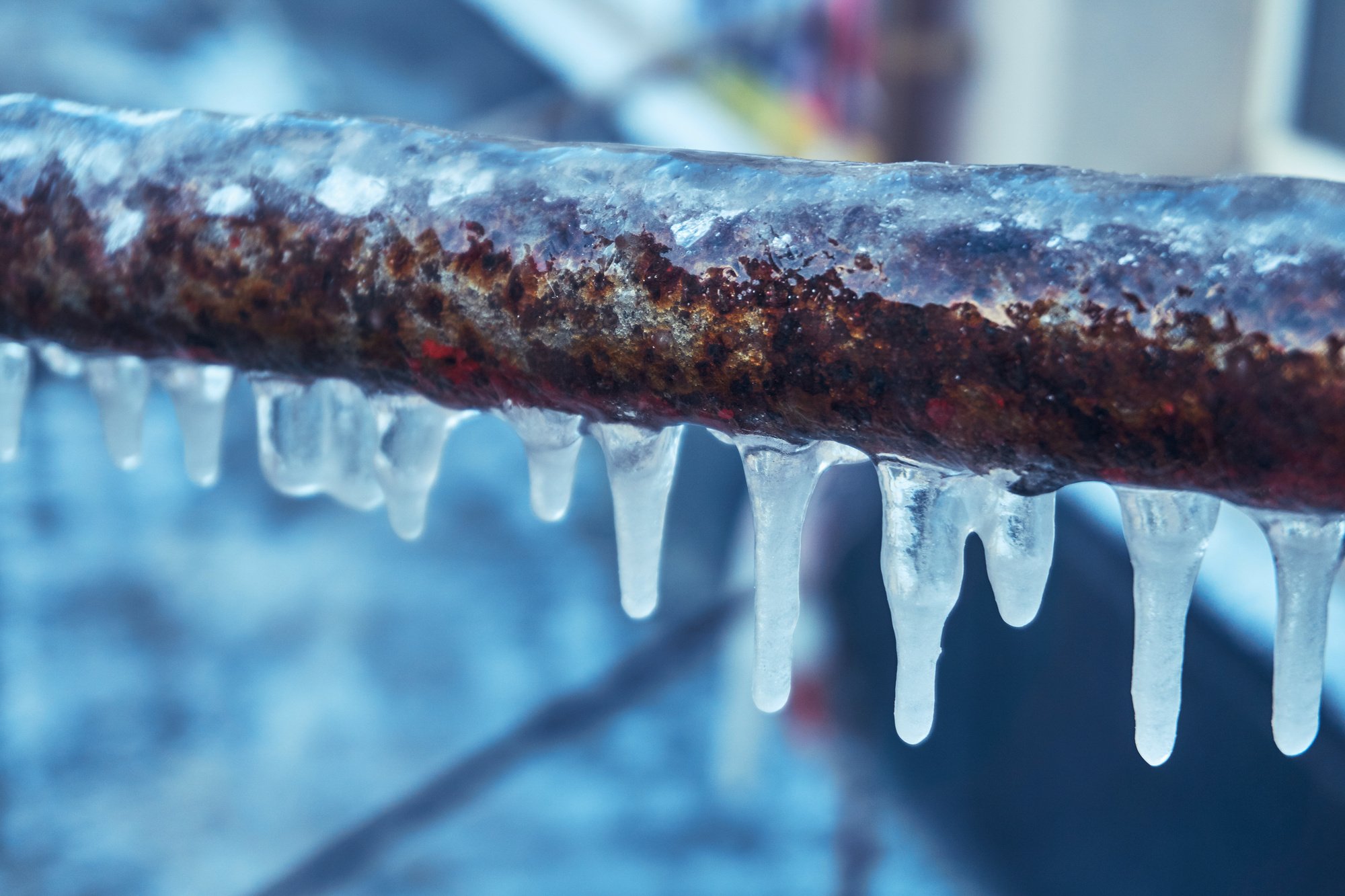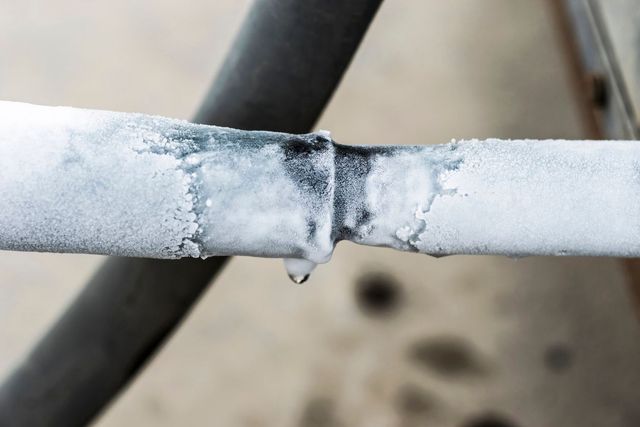Ways to Unfreeze Your Frozen AC Pipe: Professional Guidance
Ways to Unfreeze Your Frozen AC Pipe: Professional Guidance
Blog Article
The publisher is making a few great observations related to What Do I Do If My AC Pipe Is Frozen as a whole in this article which follows.

Introduction
Finding that your a/c pipe is frozen can be worrying, specifically during hot summer season when you count on your air conditioning system the most. Comprehending what to do in such a scenario is critical to prevent more damages to your cooling system and guarantee your comfort indoors.
Comprehending the Causes
Several elements can contribute to the freezing of an air conditioning pipeline. Understanding these causes can aid you attend to the problem efficiently.
Absence of Airflow
One usual cause of a frozen air conditioning pipe is inadequate air movement. When the air movement over the evaporator coil is limited, it can cause the coil to drop below freezing temperature, causing ice development on the pipeline.
Reduced Refrigerant Levels
Inadequate cooling agent degrees in your a/c system can additionally cause an icy pipeline. Reduced refrigerant levels can cause the pressure in the system to go down, resulting in the freezing of moisture on the evaporator coil.
Cold Weather Conditions
In cooler environments, freezing temperatures outside can contribute to the freezing of AC pipelines. If your a/c system is not properly insulated or if there are leakages in the ductwork, chilly air can infiltrate the system, causing the pipeline to ice up.
Dirty Air Filters
Dirty or blocked air filters can limit airflow in your AC system, resulting in numerous problems, consisting of an icy pipe. It's important to replace or clean your air filters frequently to guarantee appropriate air flow and stop ice accumulation.
Indications of a Frozen AC Pipe
Acknowledging the indications of an icy air conditioning pipeline is critical for timely action.
Reduced Airflow
If you see a considerable reduction in airflow from your vents, it might suggest an icy pipeline.
Ice Buildup on the Pipe
Noticeable ice buildup on the refrigerant line or the evaporator coil is a clear indicator of an icy AC pipeline.
Unusual Sounds from the Unit
Uncommon noises, such as hissing or bubbling, originating from your air conditioning unit can indicate that there's ice existing on the pipe.
Immediate Actions to Take
When confronted with a frozen a/c pipeline, it's important to act promptly to prevent additional damages to your cooling system.
Switching off the air conditioning
The first step is to switch off your ac system to stop the system from running and intensifying the issue.
Checking for Blockages
Inspect the area around the indoor system for any type of blockages that may be obstructing air movement, such as furnishings or curtains.
Defrosting the Pipe
You can make use of mild approaches like putting towels taken in cozy water around the icy pipeline to assist thaw it slowly.
Safety nets
Taking safety nets can assist prevent future occurrences of an icy AC pipeline.
Normal Maintenance Checks
Arrange routine upkeep checks with a specialist HVAC professional to make sure that your air conditioning system is running successfully.
Altering Air Filters
Frequently change or cleanse your air filters to prevent air flow restrictions and keep optimal efficiency.
Protecting Exposed Pipes
If your AC pipes are subjected to cold temperature levels, think about insulating them to avoid cold during cold weather.
Seeking Professional Help
If DIY approaches fall short to fix the concern or if you're unsure concerning just how to continue, it's finest to look for help from a qualified HVAC service technician.
When DIY Methods Fail
If your efforts to thaw the pipeline or address other issues are not successful, it's time to contact an expert.
Value of Hiring a Professional HVAC Technician
A certified HVAC technician has the experience and devices required to diagnose and fix concerns with your air conditioning system safely and properly.
Final thought
Taking care of an icy a/c pipeline can be a frustrating experience, but knowing how to respond can assist reduce damages and restore comfort to your home. By understanding the causes, acknowledging the indicators, and taking prompt action, you can properly address the problem and prevent future events.
G UP? HOW TO FIX IT?
It happens all over America. And the rest of the world probably. It’s the hottest day ever and for some darn reason your AC isn’t cooling the house. You fiddle with the thermostat to try and fix the problem. Nada. All you can do now is go outside and check the AC unit. You make your way there and find your air conditioner unit is frozen! But how?
In this post we’ll cover how you can tell that your air conditioner has frozen (other than the obvious reasons), what could have caused the freeze, and some of the things you can do about your AC freezing up. And if you have a frozen heat pump condenser, read our blog about it to learn what to do! But remember, it is always best to avoid your AC freezing up with an AC tune up. And if you are moving into a home, it's critical to get HVAC inspection so that you are aware of an AC problems before you move in.
Keep reading and you may be able to fix the frozen AC yourself. If you can’t, call an HVAC specialist. If you live in Maryland, call SuperTech HVAC for AC repair. We’ll take care of it.
How Does An Air Conditioning Unit Work?
How you probably imagine an AC works is wrong. Contrary to popular belief, an AC system does not inject cool air into a building. Instead, it removes the heat from inside and transfers it outside. Cool huh? (Pun intended).There are 4 major components among the 3 stations of an air conditioning system: the evaporator coil, the compressor, the condenser, and the refrigerant – a special chemical that links everything together through a closed loop system.
Station 1:
Warm indoor air is sucked into the return vent, through a filter, and blows over the evaporator coil. The heat is absorbed into the cold refrigerant, turning it from liquid to gas. The air, which is now cool, is blown back into the home to areas that your thermostat, i.e. you, has decided.
Station 2:
The refrigerant makes its way outside the house to the compressor, which squeezes the warm refrigerant, raising its gaseous temperature even more.
Station 3:
When the super hot vapor refrigerant reaches the condenser, the last step, the heat is expelled and absorbed into the outdoor air. The refrigerant instantly cools, which changes it from gas back to liquid form. The cold liquid refrigerant is now ready to return to station 1 and repeat the process.
Is Your AC Freezing Up? Here Are The Signs:
As you may have guessed, your air conditioner unit freezing up on a hot day is not normal.
If this happens, there's no need to panic. Often the issue can be solved with a little troubleshooting. If the AC unit is left frozen for too long however, you may find yourself with a bigger problem.
First things first, how do you know your AC is frozen?
Well, the obvious sign is the ice on your refrigerant line-set pipe. Simply check between your outdoor AC unit and your home's exterior wall to see whether your AC line frozen.
You might also have a frozen evaporator coil. This one's not as easy to check. You'll need to open a panel on the indoor unit to inspect. Don't do this unless you're handy. If you aren't, call an HVAC pro like SuperTech HVAC or you may damage something in the process.

Do you appreciate more info about What Causes AC Pipes To Freeze?? Post a review further down. We would be glad to find out your ideas about this piece. We hope to see you back again soon. Enjoyed reading our piece of writing? Please share it. Let other people check it out. I praise you for your time. Come back soon.
Find Out More Report this page